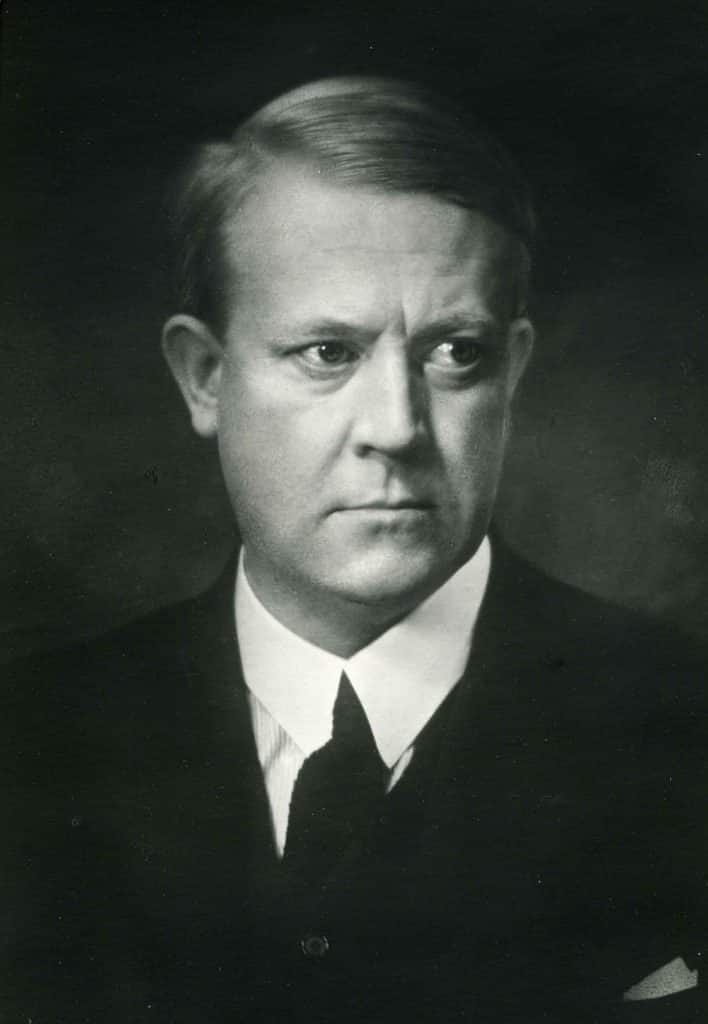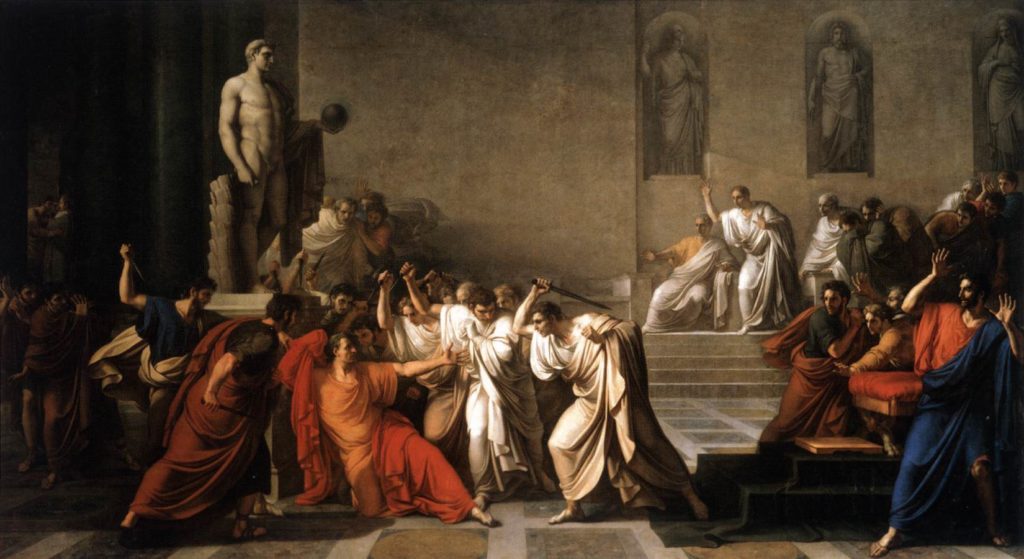Last updated on November 10th, 2022 at 07:33 pm
History is littered with traitors who sold their countries or families for personal gain. But unfortunately, for some people, greed and power overrule loyalty.
Every country has fallen prey to someone who has switched sides for their gain. It doesn’t matter if it’s money or political power promised to them. People have seen fit to betray those closest to them.
We’ve looked at some of the most notorious traitors in history, from American double-agents to ancient Greek betrayals.
Wang Jinwei
Kicking off this list, we’ve got one of the most widely known political figures in Chinese history for his fierce allegiance to the Japanese government during World War Two.
Jinwei rose to prominence as part of Sun Yat-sen’s inner circle. You maybe be familiar with Yat-sen as the first leader of the Kuomintang and his pivotal role in overthrowing the Qing dynasty.
When Yat-sen passed away, many thought that Wang Jinwei would take his place. But unfortunately for him, he lost control of the party in favor of Chiang Kai-shek.

This led to an intense rivalry between the two, with Jinwei joining anti-Chiang Kai-shek governments.
His treachery came during World War Two when he secretly accepted a deal from the Japanese from 1938 onwards.
After signing the’ Sino-Japanese Deal, he gave up Nanjing and served as a puppet ruler.’
After traveling to Japan in 1944, he passed there and avoided a trial in China for treason. They buried him near the Sun Yat-sen mausoleum.
Chiang Kai-shek destroyed it and burned the body. Publicly, Wang Jinwei is still called a traitor in China for his deal with the Japanese to sell out his home country.
Robert Hanssen
American Robert Hanssen was born in 1944 and worked as an FBI agent from 1976 to 2001. At the FBI, he held positions in counterintelligence and had access to highly classified information.
Then he sold it all to the Soviets and is still referred to as ‘the most damaging spy in bureau history.‘ Hanssen operated under an alias ‘Ramon Garcia’ and went undetected for years.
He leaked plenty of prohibited information to Russia and received over $1.4 million in return.

Hanssen’s information was invaluable to the Soviets, especially after he revealed who American spies were. For example, America’s top spy in the Soviet Union, Dmitri Polyakov, was caught by the Soviets after Hanssen confirmed his identity.
Only after another traitor, Aldrich Ames, was arrested did the FBI know there was still another mole feeding the Soviets information.
They investigated another veteran CIA agent for years. Nobody suspected Hanssen.
Finally, in 2000, the FBI and CIA obtained documents confirming Hanssens’ role as a spy for the Soviets.
They wanted to catch him red-handed, though. In February 2001, Hanssen passed classified information to the Russians and was caught red-handed.
He was sentenced to life in prison with no opportunity for parole in May 2002 and is currently in supermax prison ADX Florence.
Ephialtes of Trachis
Going back further in time, we come to Ephialtes of Trachis, otherwise known as the biggest traitor in the history of Greece. His name even means ‘nightmare.’
Little is known about Ephialtes before his betrayal, but he lived in Greece around 480 BC. Greece was at war with Persia and had an army of approximately 4,200 men based in Thermopylae.
They were blocking the Persian army from advancing, as the Trachinian Cliffs and Malian Gulf gap were too narrow for them to go through.

However, another pass went over the mountains south of Thermopylae and went behind the Greek army.
Someone passed that information on, and the Persian army used it to win the Battle of Thermopylae in 480 BC. Ephialtes told them the location expecting a reward, but that never happened.
As a result, he fled to Thessaly with a bounty on his head. Ten years later, Athenades collected this bounty. The bitter feeling toward Ephialtes of Trachis runs deep in Greek history.
Mir Jafar
In Indian culture, the name Mir Jafar is synonymous with betrayal. He is reportedly still one of the most hated figures across India, Pakistan, and Bangladesh.
He lived from 1757 to 1765 and had a military background, serving as a soldier in the Nawan of Bengal, Alivardi Khan’s army. Eventually, he worked his way up to a commander and married Alivardi Khan’s niece.
Mir Jafar’s goal was to become the Nawab of Bengal, so he plotted to take out Alivardi Khan. However, Khan passed from natural causes before it happened.

Jafar feigned loyalty to Alivardi Khan’s successor Siraj Ud Daulah and became his commander-in-chief, but when the British invaded in 1757, he betrayed his own country.
The British wanted Bengal, as it was a rich country with plenty of natural resources. So they worked with Mir Jafar to win the battle of Plassey, defeating Siraj Ud Daulah.
From there, Mir Jafar finally achieved his dream and became the Nawab of Bengal, as a puppet ruler of Britain. However, he didn’t stay allied with the British and tried to collude with the Dutch to break away from British rule.
Despite this, he ruled as Nawab until he passed in 1765.
Benedict Arnold
Benedict Arnold is synonymous with the term “traitor” in the United States for his betrayal of the US in the American Revolution.
Before that betrayal, he was an officer in the Continental army, conducting several successful army operations, and was considered a hero.
He worked his way up the ranks but was dismayed when Congress awarded five new major generalships in February 1777 and didn’t include him.
Even though he was made a Major General two months later, Arnold was bitter. Nevertheless, he fought in the Battle of Saratoga and took command of Philadelphia in 1778.

This is where he fell out of favor. Arnold was extravagant with his cash, raising money by breaking state and military regulations. Soon he was transferred to commander of West Point, New York.
West Point was a well-known American stronghold. Arnold planned to surrender it to the British for the £20,000 they’d advertised for its capture.
His treacherous plot was made public after the Continental army captured British Major John André with papers exposing it.
Arnold had no choice but to flee America and settle in London for the remaining ten years of his life.
Sidney Reilly
When you read this, you might think it sounds like the plot of a James Bond film or novel. That’s not far off. Sidney Reilly’s escapades inspired the original James Bond novels.
Also known as the ‘Ace of Spies’, Sidney Reilly was born in Russia and was later employed by the Scotland Yard’s special branch and the British Secret Service Bureau.
He was supposedly involved in espionage from the 1890s until he passed away. What makes him a traitor is that he worked for British agencies spying on the Soviets–his homeland.
He operated in secrecy and was known for cloak-and-dagger tactics.

It was discovered that he was a double agent for the British and was lured back to Russia in 1925 as he attempted to overthrow the Bolshevik government.
However, he was arrested at the border instead of meeting the anti-Bolshevik group he was expecting.
Even in the capture, Reilly remained a spy. He kept notes about enemy interrogation techniques on cigarette papers in his cell to be used for his liberation. Sadly, that never happened, and they shot him in a forest near Moscow in November 1925.
Judas Iscariot
No article about traitors could miss mentioning Judas Iscariot. In almost every language, the word ‘Judas’ means betrayer or traitor.
He was one of the Twelve Apostles of Jesus Christ, who betrayed him to Romans in exchange for 30 silver coins.
Judas took soldiers to the Garden of Gethsemane and identified Jesus by kissing him and calling him ‘Rabbi.’ After that, Jesus was arrested and crucified.
Stories differ on what happened to Judas after he took his own life or God struck him down.

More recently, they discovered a text called the Gospel of Judas, revealing that Jesus wanted Judas to betray him to the Romans. Although this is a retelling of the tale, it could mean he has been unfairly treated throughout history.
Vidkun Quisling
Back in World War Two, we have Vidkun Quisling. He was the Minister-President of Norway from February 1942–May 1945 and the leader of a Norwegian fascist political party called Nasjonal Samling (National Union).
Quisling co-founded the National Socialist party to emulate Germany in 1933. Their policies were pro-German, anti-Semitic, and fascist.
Quisling was a big fan of Adolf Hitler and visited him in 1939 when he pressed Hitler to invade Norway.
When the Germans did in 1940, he declared himself head of government on national television. However, this poorly formed government received little support and collapsed in less than a week.

However, he lived on. In 1942 he was appointed Minister-President by Josef Terboven, the Reich Commissioner for Norway. However, it was nothing more than a puppet role.
Quisling was responsible for Norwegian Jews being sent to concentration camps.
After the war, he was put on trial with a few other Nasjonal Samling leaders and then shot by a firing squad for his crimes. His legacy lives on, as the word ‘quisling’ in Norway usually means traitor.
Robert Ford
Robert Ford was an American outlaw who lived from 1862 to 1892. He grew up admiring Jesse James, a famed American outlaw, and eventually met him when he was 18.
From there, he joined the gang and took part in train and bank robberies around America.
By 1882, James barely had a gang left after several defections, arrests, and casualties. He thought he could only trust Ford and his six brothers.

They planned to rob the Platte City Bank in Missouri, but the Ford brothers had already planned to betray James and collect the high bounty on his head.
In April 1883, James realized the brother’s potential treachery, so Robert acted fast. While James was cleaning a picture with his back to Ford, he shot him in the back of the head.
Unfortunately, not everything went according to plan for the Ford brothers. Instead of being rewarded, they were charged with the slaying. Although they were later pardoned. Ford met a similar fate ten years later at the hands of Edward O’Kelley,
Gaius Cassius Longinus / Marcus Junius Brutus
Have you ever wondered where the phrase ‘Et tu Brute?’ comes from? Well, you’re about to find out.
Travel back to 44 BC, when the Roman Republic crumbled under Julius Caesar. He was a dictator and met his end at some senators’ hands during a Senate meeting. Marcus Junius Brutus and Gaius Cassius Longinus led the conspiracy.
Caesar’s dictatorship meant the next generation was struggling to succeed politically. Nobody could change legislation or shape Roman policy, as everything had to be approved by Caesar.
This fact, combined with Rome’s notorious hatred of Kings, meant Caesar had to go.

The conspiracy formed, led by Longinus, Brutus, and a few other recruits, including one of Caesar’s closest allies, Decimus Junius Brutus. They decided on the Ides of March senate meeting, and 23 senators stabbed Caesar.
Unfortunately, this only led to more unrest and trouble in Ancient Rome, leading to a series of civil wars.
The phrase ‘Et tu Brute?’ came from William Shakespeare’s play Julius Caesar, dramatizing the events. However, it is rumored that Caesar said, ‘you too, child?’ when he saw that Brutus was one of his attackers.
Traitors of History
As we can see, a common theme for traitors is their desire for power. Their greed overtakes common sense, and they sell out or backstab people to get what they want. Most of these people will have dreamed of glory, wanting to go down in history as great rulers.
But they should have been careful what they wished for. So, yes, they went down in history. But as a traitor instead.

